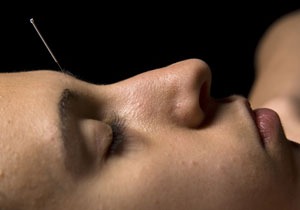Toothache is the most common type of orofacial pain.
 Toothache is pain in and around the teeth and jaws and is most often caused by tooth decay. The pain usually starts suddenly and can vary from mild discomfort to a severe throbbing pain. The area of your jaw close to the infected tooth may also be sore and tender to the touch. Toothache may come and go or be constant. Eating or drinking can make the pain worse, particularly if the food or drink is hot or cold.
Toothache is pain in and around the teeth and jaws and is most often caused by tooth decay. The pain usually starts suddenly and can vary from mild discomfort to a severe throbbing pain. The area of your jaw close to the infected tooth may also be sore and tender to the touch. Toothache may come and go or be constant. Eating or drinking can make the pain worse, particularly if the food or drink is hot or cold.
The NHS advises that if you have toothache for longer than one or two days, you should visit your dentist as soon as possible to have it treated. The longer you leave it, the worse it will get.
If your toothache is not treated, the pulp inside your tooth could eventually become infected resulting in a dental abscess.
A number of other conditions can cause pain similar to toothache including sinusitis, periodontal abscess and sore gums. Babies can also experience discomfort when their teeth start to develop (teething).
About Facial Pain
Facial pain is most commonly due to temporomandibular joint dysfunction (TMJD). TMJD is a symptom complex including pain and dysfunction of the muscles of mastication (which move the jaw) and the temporomandibular joints (which attach the lower jaw to the skull). The primary features are pain, restricted jaw movement and joint sounds. Sufferers may also experience headaches, tinnitus and dizziness. The causes of TMJD are poorly understood. It is believed that trauma, such as whiplash injury may play a role. Conventional treatments for TMJD include analgesics, anti-inflammatory drugs, bite guards, cognitive behavioural therapy and surgery.
Severe shock-like facial pain may be due to trigeminal neuralgia – see Chronic & Neuropathic Pain.
Acupuncture for Dental & Facial Pain
A World Health Organization review and analysis of controlled acupuncture clinical trials includes Pain in Dentistry (including dental pain and temporomandibular dysfunction) and Facial Pain (including craniomandibular disorders) as symptoms for which acupuncture has been shown to be effective. More specifically research studies indicate that acupuncture may help relieve dental and facial pain by:
- Reducing the reflex elicited by toothache
- Regulating the anterior temporalis muscle via reflex pathways, to facilitate smooth opening and closing of the jaw
- Stimulating the production of pain relieving endorphins
- Reducing inflammation
- Increasing local circulation, reducing swelling
- Releasing adenosine involved in regulating metabolism
- Reducing the brain’s sensitivity to pain and stress
See also:
Treating Dental & Facial Pain
 “If you have dental pain due to tooth decay or dental trauma, then it’s important to see a dentist to get treatment. Acupuncture can be very helpful in providing pain relief pre- and post- dental treatment, but also in reducing anxiety if you are nervous about going to the dentist.
“If you have dental pain due to tooth decay or dental trauma, then it’s important to see a dentist to get treatment. Acupuncture can be very helpful in providing pain relief pre- and post- dental treatment, but also in reducing anxiety if you are nervous about going to the dentist.
In Chinese Medicine, face pain is seen as obstruction of the flow of energy in the head. When treating face pain it’s important to determine which meridians are affected. Acute facial pain is more likely to be due to an external pathogenic factor, whereas in chronic cases there is likely to be an internal imbalance, with or without any pathogenic factor. Effective treatment depends on taking a detailed case history and making a sound diagnosis”.
FURTHER INFORMATION
Backer, M & Hammes, M. (2010) Acupuncture in the treatment of pain, an integrative approach. Elsevier
World Health Organization. Acupuncture: Review and Analysis of Reports on Controlled Clinical Trials (2003), 87pp. Full report http://apps.who.int/medicinedocs/pdf/s4926e/s4926e.pdf
Research Fact Sheets
For more information see the British Acupuncture Council Research Fact Sheet below.
Testimonials
“After lengthy surgery on my sinuses and right eye socket I was feeling very sore and swollen, and despite the medication, my face was on fire with pain. During the acupuncture session I had the curious sensation of my face cooling, as though an icepack had been applied. The pain just melted away. I went home and slept for hours! Thank you Judy”
“Judy, I can’t thank you enough for how much you have helped me. I feel so well, so clear-headed (which for me is a miracle!), so much more energy and most importantly free from pain! THANK YOU!”
“Thank you Judy. I think you made a big difference to my face – there is now only a very small sore spot and no pulsing pain at all.”
“I saw Judy after I had an attack of Bell’s Palsy. Because of the damage to my facial nerves, the muscles in the left side of my face were weak and unresponsive. Judy helped me enormously as I struggled to recover, listening carefully to my symptoms and gently providing treatments to deal with them. Thanks to her care, effort and support, I have fully recovered. I still see Judy regularly for general health maintenance and I wouldn’t hesitate to recommend her.”
“Thank you for the lovely treatment earlier. My mouth has felt less tense and I was actually able to eat my dinner with more ease – and my mouth isn’t aching after eating.”
I started seeing Judy in the beginning of July after having been diagnosed with a severe case of Bell’s Palsy (the whole of the right side of my face was paralysed to the point that I couldn’t blink, and my speech was severely impaired).
The doctor at the hospital said that recovery was usually achieved within 9 months; however, from his experience, those patients who undertook acupuncture often had a quicker (and due to it being nerves, therefore better) recovery.
As we were in the midst of lockdown, I wasn’t sure if anyone would be able to see me, but, after some research, I found Judy and sent her a message. She very swiftly responded and undertook an initial telephone assessment. She recognised that my case would be considered urgent, and she was therefore able to see me.
I had never had acupuncture before, and didn’t really know what to expect, but I arrived to find an incredibly professional, clean and welcoming studio within a very short and easy to find journey from Tunbridge Wells. Judy allayed my initial worries and had a quick chat and then got on with the treatment.
Within the space of 1 month of multiple treatments, I am pretty much completely recovered. Doctor friends have commented that they have never seen such a quick and successful recovery, and I am certain that Judy’s work has played a significant role in this; there were noticeable improvements immediately after each session.
Judy is welcoming, warm, and just a genuinely lovely person who acts with a level of kindness, courtesy and professionalism which immediately puts you at ease. I could not recommend her highly enough and will be sure to see her with any other ailments for which acupuncture may be recommended in the future



